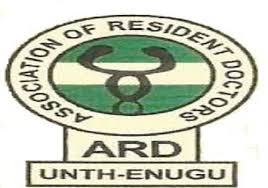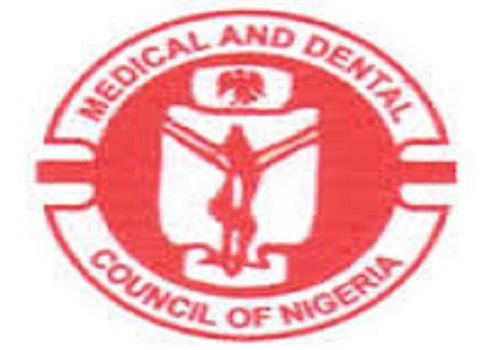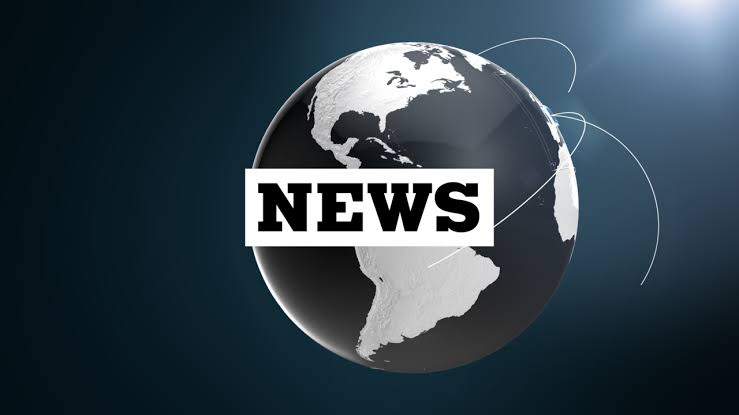. Peers voted on the controversial measure following impassioned debate
. Following a free vote, the amendment passed by 280 to 48, majority 232
. Critics argue it will be start of 'slippery slope' towards designer babies
. Fertility expert Lord Winston said it would be 'wrong' to veto the law
. Lord Tebbit said the only way to avoid defects was not to have children
The UK has become the first country in the world to legalise the creation of in-vitro fertilisation (IVF) babies using DNA from three people after peers overwhelmingly backed the proposals. The House of Lords voted by 280 to 48, majority 232, on a free vote to throw out a move to block regulations introducing mitochondrial donation techniques after an impassioned debate lasting nearly four hours. MPs, including all three main party leaders, voted earlier this month in the Commons in support of the pioneering techniques, which will now be legalised following Lords approval.
Health minister Earl Howe said it would be 'cruel and perverse' to deny for any longer than was necessary the chance of some women who carry serious inherited diseases to have healthy children. Tory former Cabinet minister John Gummer, known in the Lords as Lord Deben, put forward a motion rejecting the move until a joint committee of MPs and peers had reported on safety procedures, but his plan was rejected in the vote.
The regulations themselves were then nodded through by peers moments later.
Chief medical officer Dame Sally Davies backed the amendment to the 2008 Human Fertilisation and Embryology Act. Scientists at Newcastle University have developed a way of swapping the mother-to-be's diseased mitochondria – the 'batteries' that give cells energy – with healthy ones from another woman's egg. Dame Sally said: 'I want them to consider in the Lords what this is. It's quite separate from the illegal act of changing DNA in the nucleus. It would give these women their own children and these families hope, and I believe this is right. We have a very strong regulatory system that would regulate first the service and secondly would review every individual case before they could happen.'

The Government's most senior health advisor admitted if the treatment fails there would be an increased miscarriage rate, but added that there was 'no expectation of that'. Critics have pointed out no clinical trial has taken place to show conclusively that the treatments are safe in humans. However, three separate expert reviews for the Human Fertilisation and Embryology Authority found that the technique is ready to go forward.
Dame Sally said: 'The only clinical tests you can do are either in rats, mice and monkeys - and those have been done - or in humans and the mothers now want to do this following those three scientific reviews. I wouldn't call it a test, but the first cases will be scrutinised very carefully.'
She also denied the legislation would lead to a 'slippery slope' giving way to the creation of designer babies.
Opponents, including church leaders and pro-life groups, have warned that the change will create 'three parent families' and has been brought about too hastily. But Lord Howe said the move to permit the controversial procedures, aimed at preventing serious inherited, mitochondrial diseases, offered 'real hope' to families. My own position, shared by ministerial colleagues, is very simple,' he told a packed chamber. Families can see the technology is there to help them and are keen to take it up. It would be cruel and perverse in my judgment to deny them that opportunity for any longer than absolutely necessary. There is only one absolutely safe way to ensure that this genetic disease is not handed down from generation to generation and that is for those women who are carriers of the genetic fault not to have children"
Lord Howe said the purpose of the regulations was to enable women to have their own genetic children free of 'terrible disease' caused by disorders in their mitochondrial DNA. The regulations did so by allowing 'healthy mitochondria' from a donor to replace the 'unhealthy mitochondria' in a woman's egg or embryo, he told peers. And he said the techniques offered the only hope for some women to have healthy genetically-related children 'who will not suffer from the devastating and often fatal consequences of serious mitochondrial disease'. Lord Howe said the Government was clear it was acting within EU law and the legislation was 'sound and robust'.
The regulations allow the Human Fertilisation and Embryology Authority (HFEA) to consider the procedure for women carrying mitochondrial disease.
Lord Deben argued it had not yet been proved the techniques were safe and there was uncertainty about their legality. If we talked about transferring the spindle from one egg to another I would not have any ethical objection - in fact I would want to support it,' he said. 'There are real doubts about safety.' He told peers he supported genetically modified crops and said: 'The testing and the science is to me clear. 'If the testing and the science in this case was as clear, as complete and as total, I believe I would be able to vote for one of these two proposals, but it isn't.'
He added: 'We are trying to protect three sets of people - families, mothers and fathers; children; and the wider society. 'We would be the first country in the world to allow this. We have to be very careful that we do so with full and wholehearted support and also that we have fulfilled the safety needs.'
A free vote in the Commons saw 382 MPs vote in favour of the controversial technology. Some 128 voted against.
Labour peer and leading fertility expert Lord Winston said: 'What we are doing if we decide not to vote for Lord Deben's amendment is expressing our concern as a House and our compassion for people who are faced with a really invidious and horrendous choice.
'Under those circumstances, given that this is going to be a limited procedure really affecting very few people, it would be utterly wrong for this House to turn down the democratically-elected chamber and not to support what the Government have proposed.'
Lord Patel, an independent crossbench peer and retired professor of obstetrics, played down the safety fears raised by Lord Deben. He told peers: 'Decisions of safety and efficacy should be taken by the statutory regulatory authority created to do this, the HFEA. 'Risks must be balanced. Evidence suggests that any risk of mitochondrial donations are proportionality less than the significant risk that children will continue to be born and develop severe mitochondrial disease if these techniques are not used. 'Ultimately it will be up to the affected families to judge the risks - they are the ones who will take the risks.'
The Bishop of Carlisle, the Rt Rev James Newcome, said the Church of England was not opposed in principle to mitochondrial transfer. 'But at the same time we have always counselled a degree of caution given the potential implications of this development,' he said. He said research tests into safety should be completed and reported before the change was approved and expressed disappointment over the 'element of rush'. The Bishop said: 'Both personally and as a representative of the Church of England I am basically very much in favour of this development. But I cannot ignore the compelling arguments against pushing this through in haste.'
Tory former Cabinet minister Lord Tebbit told peers: 'There is only one absolutely safe way to ensure that this genetic disease is not handed down from generation to generation and that is for those women who are carriers of the genetic fault not to have children. That may be an appalling thing for me to have said, many people would think, but there are many people who for various reasons cannot have children.'
The UK's fertility sector regulator, the Human Fertilisation and Embryology Authority, said it would now develop a licencing framework for clinics planning to offer this treatment.
Sally Cheshire, Chair of the HFEA, said: 'After many years of scientific and ethical debate, Parliament has decided today to permit the use of mitochondrial donation to give families with serious mitochondrial disease the possibility of having their own healthy genetic children.'Britain is the first country in the world to permit this treatment, and it is a testament to the scientific expertise and well-respected regulatory regime that exists across the UK that Parliament has felt able to approve it. The HFEA now have to develop a robust licensing process, which takes into account on a case by case basis the technical and ethical complexities of such treatments to ensure that any children born have the best chance of a healthy life.'
Q&A: HOW MITOCHONDRIAL DONATION WORKS AND WHY IT IS NEEDED
Mitochondrial donation would allow IVF babies to be born with DNA from three different people should the technique be made legal.
It involves replacing DNA in an egg in order to prevent devastating inherited mitochondrial diseases.
WHAT ARE MITOCHONDRIA?
Mitochondria are tiny rod-like structures in cells which act as power houses, generating the energy that allows our bodies to function. Unusually, they have their own DNA, distinct from the genetic material within the cell nucleus. Mitochondrial DNA (mDNA) makes up about 0.1 per cent of a cell's total DNA and does not affect individual characteristics such as appearance and personality.
WHAT CAUSES MITOCHONDRIAL DISEASE?
Harmful mutations in mitochondrial DNA can prevent the mitochondria working properly, resulting in a number of diseases some of which can be serious and life threatening. They may affect major organs and cause conditions ranging from poor vision to diabetes and muscle wasting.
HOW ARE MITOCHONDRIAL DISEASES PASSED ON?
Children may inherit mitochondrial DNA defects from their mothers, but not their fathers. People with faulty mDNA can develop symptoms or be carriers of the condition without experiencing ill-effects themselves.
WHAT IS MITOCHONDRIAL DONATION?
Defective mDNA from a mother's egg can be replaced with healthy mDNA from a donor. This will then prevent the harmful mutations being inherited and passed on to future generations.
WHAT ARE THE TECHNIQUES INVOLVED?
There are two different procedures, one carried out before fertilisation and the other after.
Maternal Spindle Transfer (MST) involves first removing the nuclear DNA from a donor egg whose mitochondria are healthy. The 'spindle' of chromosomes containing the mother's nuclear DNA is then taken from her egg and inserted into the donor egg. As a result, the donor egg is left with nuclear DNA from the mother and mDNA from the donor. This healthy egg is then fertilised and implanted into the mother's womb.
Pronuclear Transfer (PT) is similar but in this case the mother's egg is fertilised first. Its nuclear DNA is then transferred to a fertilised donor egg, containing healthy mitochondria, whose own nuclear DNA has been removed. This healthy fertilised egg is then implanted.
HOW SAFE IS MITOCHONDRIAL DONATION?
Animal and laboratory experiments suggest that the procedures are safe, but no-one can say that the risk is zero. Three separate reviews by an expert panel convened by the Human Fertilisation and Embryology's Authority have found no evidence that the techniques are unsafe for clinical use.
Critics argue that problems might only arise once the procedure is used to create human babies. For instance, replacing mDNA might have more of an impact on personal traits than had been envisaged. Unknown epigenetic effects, environmental influences that alter the way genes work, may also have serious consequences for the health of babies, it is claimed.
Dailymail
ABUJA: Training Schedule for Basic Life Support BLS, Pediatric Advanced Life Support (PALS), Advanced Cardiovascular Life Support ACLS, First Aid, CPR, AED
PORTHARCOURT: Training Schedule for Basic Life Support BLS, Pediatric Advanced Life Support (PALS), Advanced Cardiovascular Life Support ACLS, First Aid, CPR, AED
LAGOS: Training Schedule for Basic Life Support BLS, Pediatric Advanced Life Support (PALS), Advanced Cardiovascular Life Support ACLS, First Aid, CPR, AED



